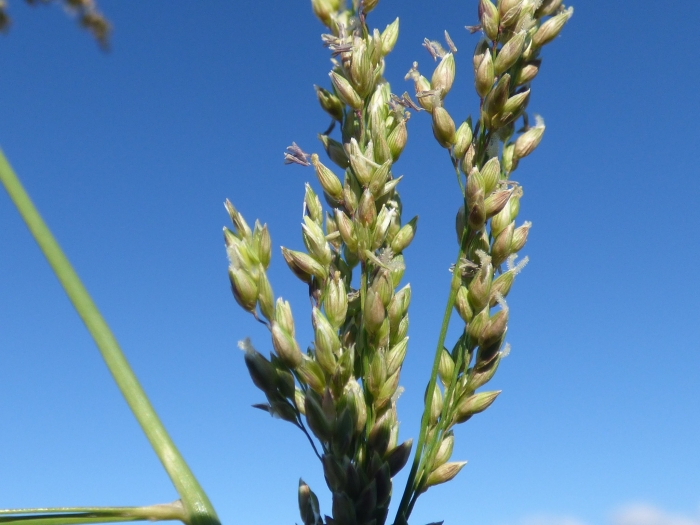Blue Panicgrass
(Panicum antidotale)
Blue Panicgrass (Panicum antidotale)
/
/

Forest and Kim Starr
CC BY 2.0



























Estimated Native Range
Summary
Blue Panicgrass is valued for its drought tolerance and ability to thrive in poor soils, making it a suitable choice for xeriscaping and naturalistic plantings. It is often used for erosion control due to its robust root system. While it does best in full sun, it can tolerate light shade. It requires low to medium amounts of water and prefers soils with medium to slow drainage. Gardeners should be cautious when planting Blue Panicgrass outside its native range, as it has shown invasive tendencies in certain areas, such as the United States. It is advisable to consult local regulations and consider native alternatives if there is a risk of invasiveness.CC BY-SA 4.0
Plant Description
- Plant Type: Grass
- Height: 4-9 feet
- Width: 0.5-1 feet
- Growth Rate: Moderate
- Flower Color: N/A
- Flowering Season: Summer, Fall
- Leaf Retention: Deciduous
Growth Requirements
- Sun: Full Sun
- Water: Low, Medium
- Drainage: Medium, Slow
Common Uses
Bank Stabilization, Bird Garden, Butterfly Garden, Deer Resistant, Drought Tolerant, Edible*Disclaimer: Easyscape's listed plant edibility is for informational use. Always verify the safety and proper identification of any plant before consumption., Low Maintenance, Potted Plant, Rabbit Resistant
Natural Habitat
Open woodlands, savannas, and grasslands
Other Names
Common Names: Blue Panic, Blue Panic Grass, American Milletgrass, Giant Panic, Pánico Azul, Panic Bleu, Panico Antidotale, Blue Panicgrass, Blue Panicum
Scientific Names: , Panicum antidotale, Panicum miliare, Panicum proliferum, Panicum meneri, Panicum akoense, Chasea prolifera, Panicum antidotile, Panicum brevifolium, Panicum musciparum
GBIF Accepted Name: Panicum antidotale Retz.